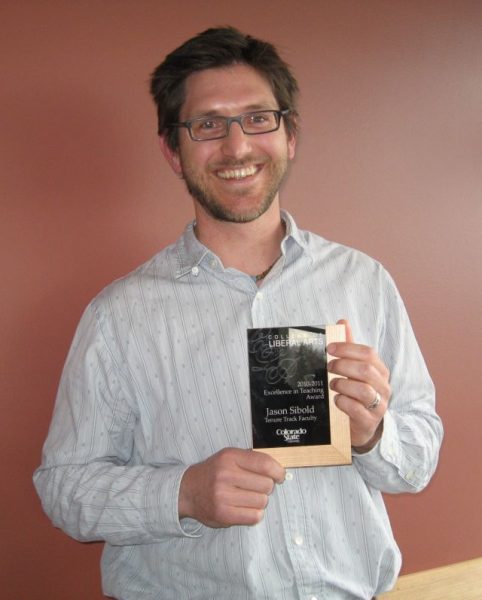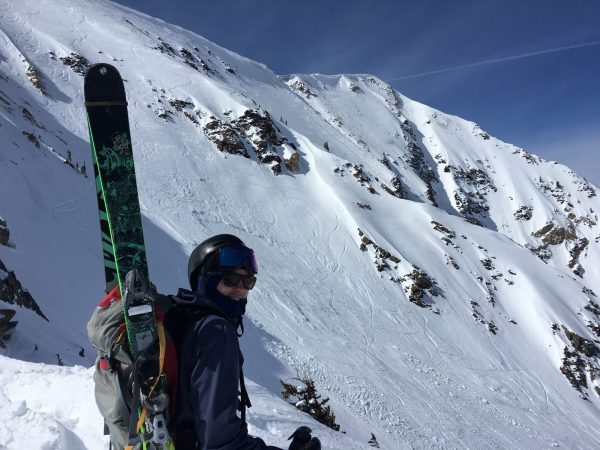Opportunity beckons Geography student to London School of Economics
Joshua Zaffos
Additional content by Becca Lee-Simpson
Justin Smith was touring London during a post-high-school gap year when he stumbled upon his future. After wandering the famed West End District, Smith found himself gazing at the iconic arch-framed entrance of the Old Building of the London School of Economics and Political Science (LSE).
“I remember thinking, ‘What is this place?’” recalled Smith. As he realized he was looking upon one of the world’s leading academic institutions, Smith made a bold pledge to himself: “I decided then that was where I wanted to go in the future.”

Smith, who will graduate from Colorado State University majoring in Geography and Economics, will make good on that goal this fall after being accepted to LSE. Smith will pursue a Master of Science in Local Economic Development in the school’s Department of Geography widely ranked as one of the leading programs in the world.
“I’m over the moon,” Smith said of his acceptance to the program.
Smith, who grew up in Crested Butte, Colo., chose to major in Economics soon after arriving at CSU. He discovered a second major after taking Introduction to Geography (GR 100) with Professor Jason Sibold who then encouraged Smith to take Mountain Geography (GR 303) since Smith had performed well – and grew up in the Colorado mountains.
“I remember how enthusiastic Justin was learning about every aspect of geography in Introduction to Geography, especially human-environment interactions,” said Sibold, who led the launch of CSU’s Geography program in 2018. “It was clear that he needed to take more Geography classes and given his experience in mountains, Mountain Geography was an obvious class for him.”
“Dr. Sibold put a lot of trust in me,” Smith said. “That was a 300-level course but I decided to take it [as a freshman]. I think I received a D- on the first test but I worked very hard and eventually earned an A in the course. Afterwards, I decided to add Geography as a major because I realized I loved learning about places.”
Smith’s coursework revealed the intersection between economics and geography and he began to see how he could bridge the concentrations and study how this interrelatedness can affect peoples’ and communities’ livelihoods.
“Economic activity takes place across space, and where these two fields connect has become my primary interest,” Smith said. “We are seeing the world being increasingly globalized where some people in places are doing really well and other people in other places are being left behind.”
His travels during his gap year and on a family trip to India after his freshman year heightened his attention toward the effects of geography on economic wellbeing and the sprawl between prosperity and poverty around the world.
“Traveling has been a huge part of my Geography education,” Smith said. “I think being a Geography student is about wanting to understand different places, peoples, and cultures.
“The most interesting thing to me are the characteristics and conditions in which people live and how they might influence the opportunities and outcomes in people’s lives,” he continued. “Where we’re born and live is kind of like a lottery. Nobody has a choice where we’re born but some of us are born into situations that are a lot better than other people.”
“Being a Geography student is about wanting to understand different places, peoples, and cultures.”
Geography classes and professors enabled Smith to pursue those interests and curiosities. With support from Sibold, he and other undergraduate Geography students attended the Thinking Mountains Interdiscipinary Summit in Banff, Alberta, Canada in 2018, which introduced him to the wide array of geography research.
He also learned how to use geographic information systems (GIS) – applications that allow researchers to embed and analyze data and information in digital maps – in Mapping, Cartography, and Spatial Thinking (GR 220) and Spatial Analysis with GIS (GR 420) with Professor Stephen Leisz.
“This skill – GIS – that I developed with Dr. Leisz has been hugely useful on a bunch of different projects, and I really enjoy working with and knowing to build and use data in maps,” Smith says.

“Justin is a great example of what the Geography program is trying to achieve,” said Sibold. “We want students to develop a broad understanding of the human and physical aspects of the world and integrate that knowledge with skills – like GIS or remote sensing and general spatial thinking – to then be able to take on real-world problems and provide some solutions.”
Smith has used his GIS and spatial analysis skills in research with Sibold on a long-term research project in the Grand Mesa, Uncompahgre, Gunnison National Forest, investigating how climate-change-induced forest change, through things like bark beetle outbreaks and wildfire, is altering habitat for Canada lynx, an endangered species. He has also applied his GIS and spatial analysis skills to economic research.
“We want Geography students to develop a broad understanding of the human and physical aspects of the world and integrate that knowledge with skills – like GIS or remote sensing and general spatial thinking – to then be able to take on real-world problems and provide some solutions.”
After his sophomore year, Smith landed an internship with Dr. Simonetta Longhi at the Department of Economics at the University of Reading in Britain. His project examined how and why different ethnic minorities across England and Wales experience occupational segregation. He presented the study at the 2020 Celebrate Undergraduate Research and Creativity (CURC) showcase at CSU, earning him a College of Liberal Arts Honors Award.
Smith has continued his collaboration with Longhi and is now coauthoring a paper that will analyze and compare and analyze occupational segregation of ethnic minorities in the United States and the United Kingdom. Using GIS, Smith is able to compile and model millions of data points on wages across job sectors and local regions, including the impacts of geographical characteristics on wages and different ethnic groups.
Smith also used his geography background and GIS skills in his Economics Capstone project. Working with Economics Professor Stephan Weiler, Smith analyzed Colorado rural demographic and economic-development data and surveyed CSU students to better understand and address the challenges faced by small towns trying to retain or attract college-educated individuals – also known as “brain drain.”
“Justin is exceptionally insightful and creative in his research, helping lead his capstone team last fall to a particularly successful consulting team analysis of the possibilities for Garfield County (surrounding Glenwood Springs) to create economic bridges to the high-growth Front Range corridor,” Weiler said. “This service-learning course blends research, instruction, and engagement with Colorado communities in need of good economic analysis. Justin took maximum advantage of this opportunity to best understand and help inform his county’s regional economic development opportunities.”
When Smith arrives in London this fall, he plans to continue his research interests surrounding local economic development and the circumstances and consequences of economic and income inequality. He hopes to work in international development after he graduates.
“I’m hoping to use my master’s at LSE to get into specific work that deals with place-based economic development,” Smith said, “because the end goal is to alleviate unfortunate circumstances regardless of where someone was born or lives; simply, to make it so places are better for people.”
“As a relatively small and new program, we get to know our students well and we are super excited for Justin,” added Sibold. “His success, along with a few of our other early Geography graduates, are demonstrating that the classes and experiences that we are giving students work, so we are also looking forward to working with new students to see what they can accomplish.”
Three Must-Take Geography Courses at CSU
Justin Smith

GR: 303: Mountain Geography
Growing up in Crested Butte and attending CSU, I have always felt connected to the mountains. Through this course I learned about physical and human dimensions of mountains that enhanced my understanding of my interactions with the environment. Dr. Jason Sibold is one of the foremost scientists in Western Colorado which means this course included interesting case studies of Colorado that students would not be able to access unless they took this course.
GR 330: Urban Geography
This course provided a contemporary view of cities and the disparities within and between places within the context of an increasingly globalized world economy. Dr. John Lindenbaum was able to teach local and regional differences in a manner that sparked my interest to devote my graduate studies at LSE to studying Local Economic Development.
GR 420: Spatial Analysis with GIS
This was my favorite course in the department because it was my introduction to GIS and GIS software such as ArcGIS Pro. Dr. Stephen Leisz is an awesome teacher and the labs were great at helping us learn how to use the GIS software. I now use these skills in my paid research assistant positions so it is a great skill for Geography students to develop.